We checked out a bunch of castles in Strängnäs during our castle tour by campervan. Some castles are grand and others are smaller - but all have an exciting history. We share our castle experiences in Strängnäs and, of course, tell you about our overnight stop.
Table of contents
What exactly is a castle?
So, what exactly is a castle? The need for castles arose when royalty no longer needed castles for defence. According to Nordic family book is a castle in Sweden:
A royal or state building, in older times usually fortified, intended for the residence of a royal person or his deputy.
It is often considered that a building can only be called a castle if it has been the residence of a royal person, but of course what counts as a "royal person" can be a bit fluid ...
Castles can be fortified or unfortified, grand or much smaller, well-maintained or dilapidated, private or state-owned and open to the public or equipped with locked gates. Some offer guided tours, some are run as hotels and some are private residences. There really are all kinds of castles! We're on a "castle tour" with the motorhome, and now we've checked out a bunch of castles in Strängnäs!

Four castles in Strängnäs
Stängnäs is a city with a lot of history! We have checked out four castles in the municipality of Strängnäs, and one so-called fortress. On the map you can see where they are located.
1. Tynnelsö - a pink five-storey house on an island
Tynnelsö Castle on the island of Tynnelsö in Lake Mälaren is an astonishing building. Why is a rose-coloured, five-storey building alone on an island that can only be reached by boat?
We drove the campervan on Selaön, right up to the crossing to Tynnelsö, but without a boat you can't get across. You have to make do with scouting over the water and reading the small information sign at the crossing.

The castle has a 700-year history. It served for a long time as a bishop's residence, but in 1522 it was taken by Gustav Vasa, who annexed it to the crown and used it as a summer resort. Later, Duke Charles took over, and it was he who created the Renaissance palace you can see today.
The castle had many different owners and residents over the years, but eventually it was left to decay. Today, the castle is managed by the National Property Board, which works on restoration and conservation. An impressive building that would be interesting to see up close! On the way to Tynnelsö Castle is the Åsa burial ground, which is the most famous, with thousands of prehistoric graves.

2. Mälsåker Castle - bankruptcy, resistance and fire
Mälsåker Castle is located on Selaön, the largest island in Lake Mälaren. This castle is both magnificent and beautiful, but also quite worn. Perhaps this is not so strange if you consider the castle's rather tough history!
Målsåker Castle was built in the 17th century by the Soop family with the help of the famous architect Nicodemus Tessin the Elder. During the 18th century, the castle was owned by the von Fersen family, and at the end of the 19th century it was bought by the Sjögren family, who were forced to abandon it after a bankruptcy.



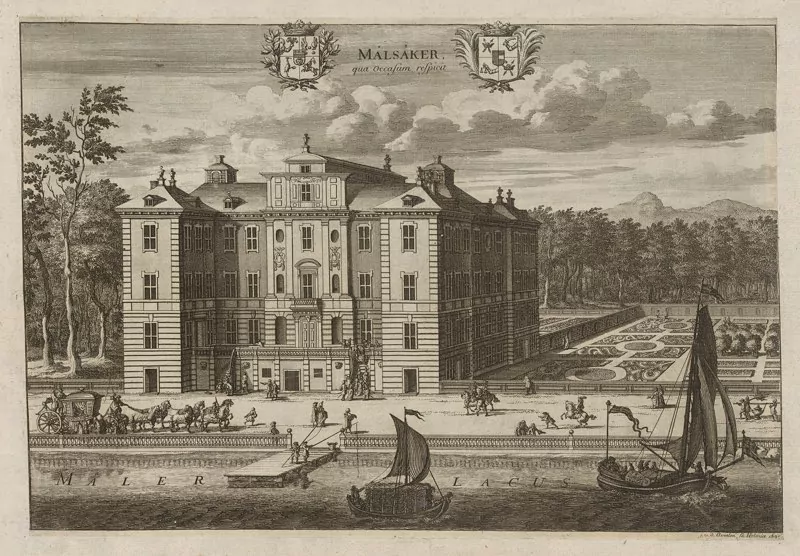
During the Second World War, the castle was owned by the Norwegian government, which used it to train would-be resistance fighters. On a cold night in 1945, the castle was set on fire, causing the roof to catch fire and burn. The castle was severely water-damaged and took some time to be properly repaired. In 2015, the State Property Agency took over the castle.

The castle has a beautiful waterfront location and a small English park. At the moment all activities are cancelled, but under normal circumstances there are exhibitions, events and "cuddles and shivers". The Viking town of Birka is just two kilometres from Selaön.


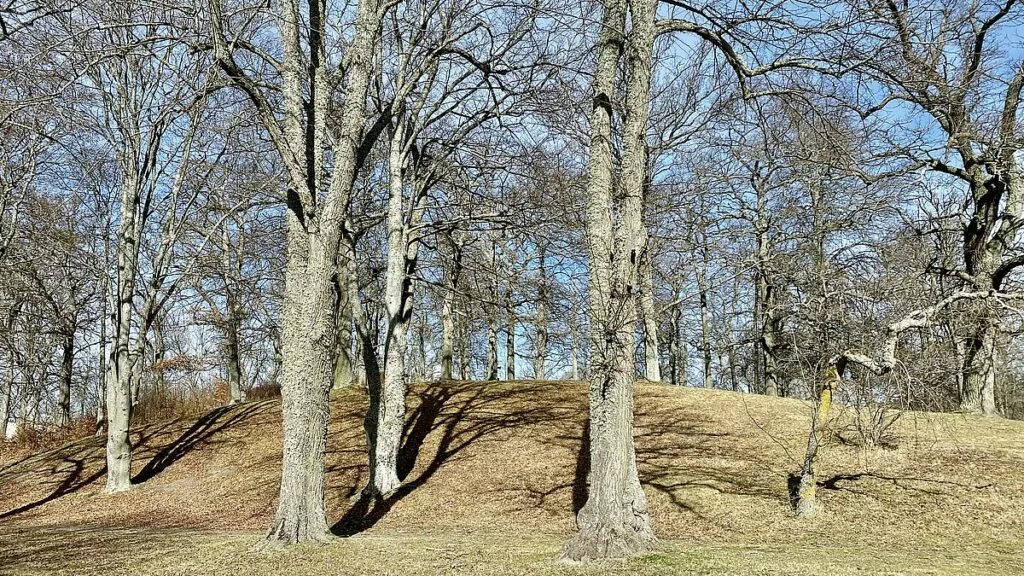
3. Hässelbyholm Castle - private 1660s castle
Hässelbyholm Castle, on the Fogdön peninsula, was built in the 1660s. The castle has been owned by, among others, Grand Admiral Count Gustaf Otto Stenbock. The castle is now a private residence and cannot be visited, although there are signs in the vicinity advertising the sale of fish, game and honey.



4. Gripsholm Castle - Royal Palace on Lake Mälaren
Construction of Gripsholm Castle began in 1537, on the initiative of Gustav Vasa. There are several rooms from the 16th century and one of Europe's most well-preserved 18th century theatres. Here you can also see the cannons Galten and Sugga and stroll around the beautiful castle park, with its plantings, statues and 'love island'.
We've already written about Gripsholm Castle, but it has to be mentioned again because this post is about castles in Strängnäs municipality. Gripsholm Castle is of course the most impressive!

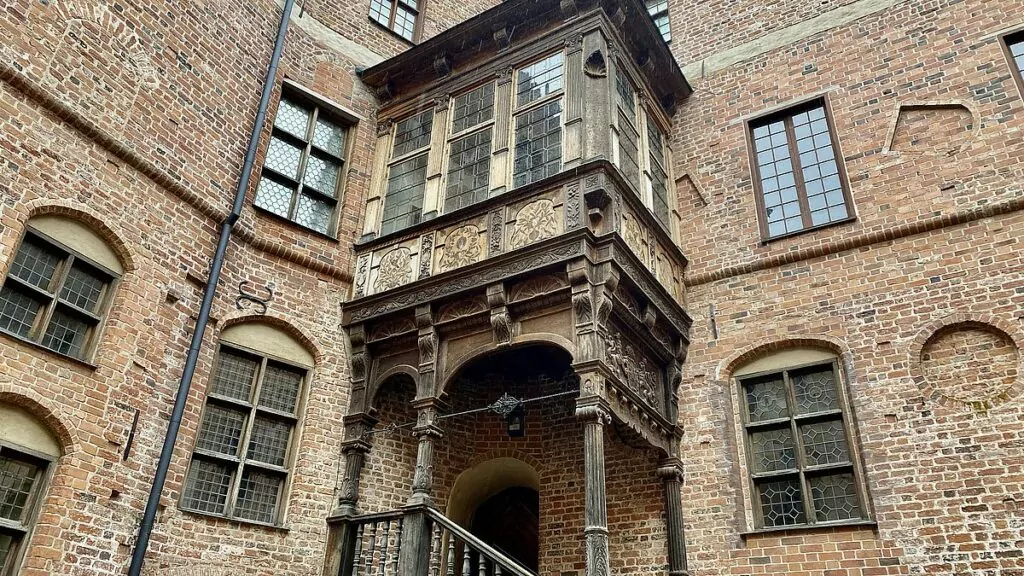

Bonus: Rye castle - perhaps the place where Gustav Vasa was elected king.
As a little bonus, we have to mention Roggeborgen, which is located in the centre of Strängnäs, right next to the cathedral. The building was built at the end of the 15th century as a bishop's palace, and the name comes from Kort Rogge, who was bishop of Strängnäs from 1479 to 1501.
In 1523, Gustav Vasa was elected king in Strängnäs, and according to some sources this took place in the Rikssalen in Roggeborgen. After the Reformation, the building belonged to the Crown and was subsequently donated to Strängnäs Gymnasium. Roggeborgen was the school's main building until 1935, and the building has since been adapted for library use.
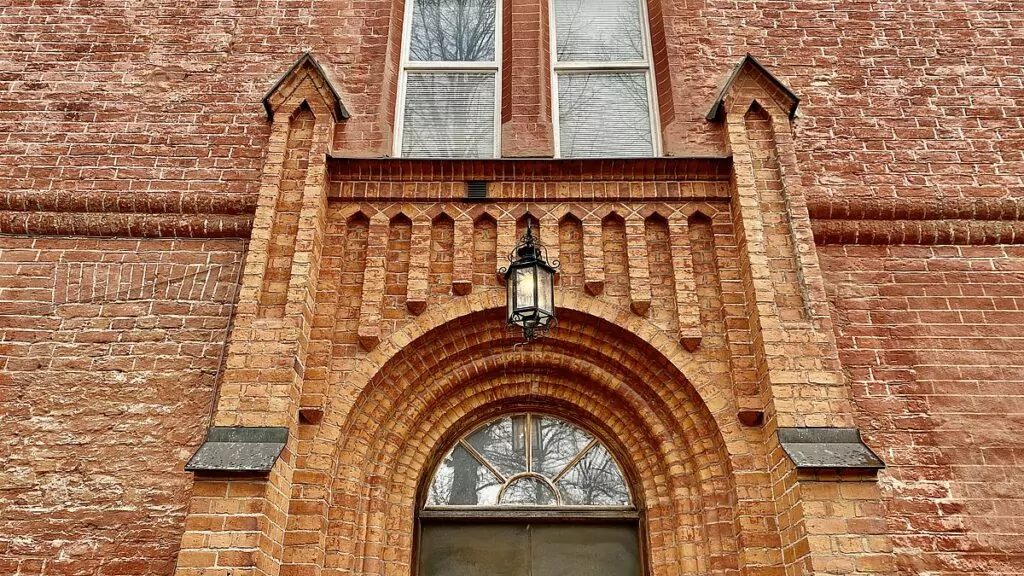


Berth in Strängnäs harbour
Strängnäs is a both charming and historically interesting city and we took the opportunity to see a little more, but we will tell you about it another time! Where did we stay with the motorhome then? Well, at the parking space in Strängnäs harbour. This is a really good and nice site, with electricity, service house and grey water drainage. If you want, you can book a place in advance at campingspot.com.

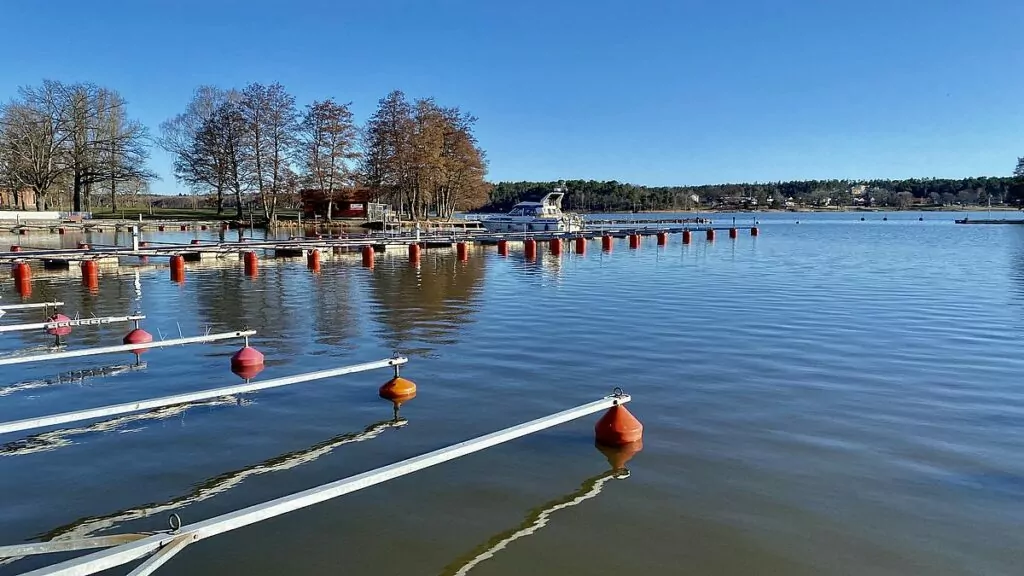
Stora Sundby Castle - fairytale castle on the banks of Lake Hjälmaren
Stora Sundby Castle is a fairytale castle with turrets and towers, beautifully situated on the shores of Lake Hjälmaren....
Boo castle, Breven's mill and car park in Vingåker
Boo Castle is a beautiful terracotta-coloured palace reminiscent of a fairytale castle. Not too far from here...
Things to do in Strängnäs - 12 sights and experiences
What to do in Strängnäs? We have visited Strängnäs several times, by train, car and...
Things to do in Nyköping - 9 sights and experiences
What to do in Nyköping? We've visited this lovely town several times over the past...
Julita farm - mansion and open-air museum
Julita Farm is a mansion and open-air museum owned by the Nordic Museum. Currently, the...
Jogersö camping and sea bathing - open all year round
Now we are finally out with the motorhome again! We both have a lot of work to do...
Malmköping swimming and camping
Malmköpings bad och camping is beautifully located by Hosjön. This is a 4-star campsite with good...
Summer and sun at Malmköping campsite
We have now driven the motorhome to Malmköpings camping. This is a classic caravan campsite: white...
Häringe castle - fine castle hotel in Södermanland
Häringe Castle is located just south of Stockholm and is a castle you visit for lovely weekend packages,...
Tyresö Castle - history and beautiful nature
Tyresö Castle is beautifully situated at Kalvfjärden in Tyresö, just south of Stockholm. We went...
Trosa havsbad and camping - nice on the waterfront
We rolled past the caravan park in Trosa yesterday, which was full of motorhomes, and continued out...
Ericsberg Castle - and other private castles in Södermanland
Ericsberg Castle is one of Sweden's most beautiful baroque castles, and the garden is occasionally open to visitors. Our...
Excursions in Stockholm in times of coronavirus - 15 tips
Tips on 15 excursions in Stockholm in times of corona! Because yes, what do you do when you don't...
Sundbyholm castle - and guest harbour with parking space
Sundbyholm Castle has a history as a monastic estate and royal palace. Today you can come here for hotel accommodation,...
Nynäs castle and nature reserve in Nyköping
Nynäs Castle is a beautiful castle in Nyköping municipality. There is also the Nynäs nature reserve, with lovely...
Skogskyrkogården in Stockholm - a Unesco World Heritage Site
The Forest Cemetery in Stockholm is one of the Swedish World Heritage Sites on the UNESCO World Heritage List. We often check...
Fishing in Lake Mälaren - a long weekend on the island of Ringsö
We have been fishing in Lake Mälaren this weekend. Our friends have a summer house on the island...
Taxinge castle - cookie castle in a beautiful location by Lake Mälaren
Taxinge castle, or Taxinge-Näsby castle, is beautifully situated by Lake Mälaren. We came here by motorhome on...
Tyresta National Park - tips on entrances and trails
Tyresta National Park is a large natural area just south of Stockholm. Here you can experience wild primeval forest,...
Gripsholm Castle - a royal castle on Lake Mälaren
Gripsholm Castle is a magnificent and royal castle by Lake Mälaren. Here the rooms remain from the Vasa kings'...
Nyköpingshus - the site of Nyköping's guest house.
Nyköpingshus has a long and sometimes very dramatic history. This medieval castle was transformed in the 16th century into a...
Södertuna castle - fine castle hotel in Södermanland
Södertuna Castle is beautifully situated by Lake Frösjön in Södermanland. You come here, for example, to treat yourself to...
What to do in Trosa - 9 tips for a picturesque gem
What to do in Trosa? We have visited this picturesque town many times. It was...
Hjälmaregården - campsite by Lake Hjälmare
Hjälmaregården is idyllically beautiful in Läppe, on the southern shore of Lake Hjälmaren (not far from Vingåker). Here are...
Öster Malma Castle - hunting, buffet and wild animals
Öster Malma Castle is a fine little white estate in Nyköping municipality. Here, much is about ...
Femöre - barren rocks and military history in Oxelösund
On the way home from Jogersö camping in Oxelösund we took the opportunity to drive past the island of Femöre,...
Ringsö in Lake Mälaren - a Swedish idyll
We spent Monday and Tuesday this week on the island of Ringsö in Lake Mälaren. Our friends...
Stendörren nature reserve - with suspension bridges between islands
Stendörren Nature Reserve is a magical coastal paradise located between Nyköping and Trosa. The water is crystal clear...
Lida Friluftsgård and the Adventure Trail around Lake Getaren.
Lida Friluftsgård, located in Botkyrka municipality in Stockholm, offers a fantastic outdoor area with...
Tullgarn Castle - in the footsteps of kings and tsars
When we went home on Sunday from our motorhome weekend at Jogersö, we needed a place to...
Things to do in Mariefred - 17 tips for a charming gem
What to do in Mariefred? This charming little gem offers everything from castles and...
Årsta Castle - with memories of Fredrika Bremer
Årsta Castle is located in Haninge, south of Stockholm, and is perhaps most strongly associated with the author...
























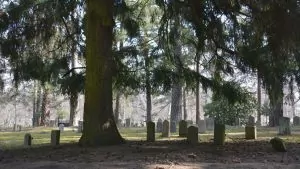


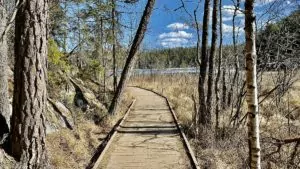














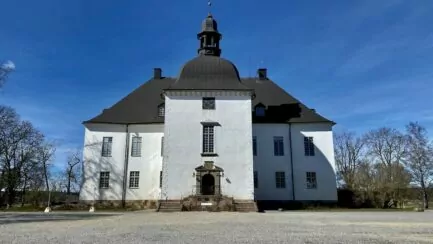



Ama de casa says:
What beautiful castles in beautiful surroundings! The castle was also beautiful. I don't think I've ever visited a castle? Probably have to do it sometime when you can start travelling a little more freely... 😉.
Have a happy Easter weekend!
03 April 2021 - 9:02
Lena+in+Wales+and+Spain says:
Nice castle reports.
Tynnelsö, exciting what will happen to the castle.
Mälsåker, seems to have been through quite a lot.
Hässelbyholm, not easy to finance a private castle.
All these unknown to me.
Roggeborgen, have read about this building somewhere, but can't remember what it looked like.
Happy Easter!
03 April 2021 - 14:34
BP says:
I've been to Strängnäs a few times, but never even considered that there are so many castles in this small town. Now I know.
03 April 2021 - 19:15